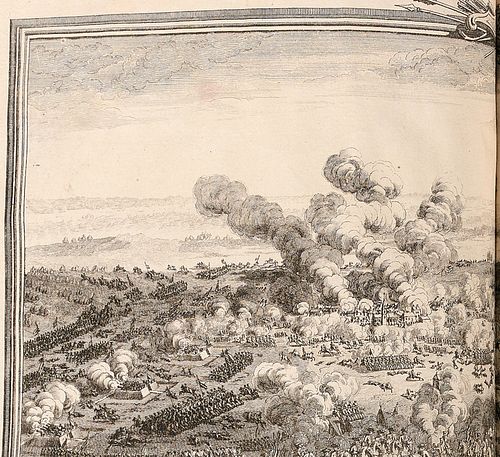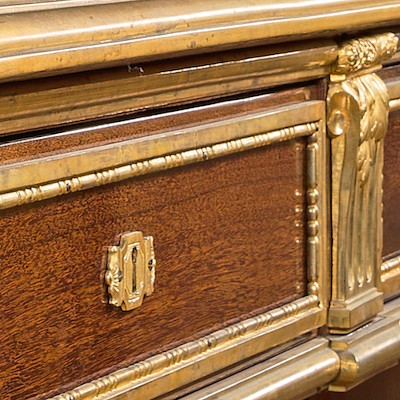DUMORTOUS (Pierre).
Lot 5
Categories
Estimate:
EUR€600 - EUR€800
$625 - $833.33
Absentee vs Live bid
Two ways to bid:
- Leave a max absentee bid and the platform will bid on your behalf up to your maximum bid during the live auction.
- Bid live during the auction and your bids will be submitted real-time to the auctioneer.
Bid Increments
| Price | Bid Increment |
|---|---|
| No bidding increment | |
About Auction
Catalog Only
By Beaussant Lefèvre & Associés
Dec 13, 2022
Set Reminder
2022-12-13 08:00:00
2022-12-13 08:00:00
America/New_York
Bidsquare
Bidsquare : Furniture and Works of Art from the Anne Aymone and Valery Giscard d’Estaing Collections
https://www.bidsquare.com/auctions/beaussant-lef-vre-associ-s/furniture-and-works-of-art-from-the-anne-aymone-and-valery-giscard-d-estaing-collections-11505
Beaussant Lefèvre & Associés contact@beaussantlefevre.com
Beaussant Lefèvre & Associés contact@beaussantlefevre.com
- Lot Description
DUMORTOUS (Pierre). History of the conquests of Louis XV. Paris, de Lormel, 1759. In-folio, (4 of which the 2nd and 4th are blank)-vi-181 [erroneously numbered 1 to 99 and 110 to 181]-(1) pp, garnet morocco, spine ribbed, cloisonné and fleurdelisé with dark green title-piece, gilt decoration on the boards formed by a triple fillet with fleurons in the corners and fleurs-de-lis in the spandrels, coat of arms in the center with the mention " MENus PLAIsIrs Du rOy ", filleted edges, inner gilt roulette, gilt edges; small restoration on the upper board; leaves with large spotting, tear without lack of two plates, one of which restored (period binding).
FIRST EDITION.
IMPORTANT COPPER ENGRAVED ILLUSTRATION. Outside text, 42 plates, that is: a frontispiece after François Boucher, 14 double-page maps and plans mounted on tabs, 27 views of battles, one of which is double-page and mounted on tab. The plan of Bruges is mentioned twice in the table of plates. In the text, 12 vignettes, that is to say: coat of arms in the title, 6 headbands and 5 footbands.
LOUIS XV AT THE HEAD OF HIS ARMIES DURING THE WAR OF THE AUSTRIAN SUCCESSION. Following the death of
of the emperor Charles VI (1740) who had decided to transmit his States to his daughter Marie-Thérèse, a conflict ignited all Europe by a complex game of shifting alliances. The fields of action were mainly Flanders and Germany, but also Italy. In 1744, Louis XV decided to lead his armies in Flanders, and remained there until 1747, witnessing the victory of Fontenoy in May 1745. The treaty of Aix-la-Chapelle ended the war in 1748.
A lawyer at the Parliament of Paris, Pierre Dumortous wanted to build a monument to the military glory of the king, as François Colletet or Sébastien de Beaulieu had done for Louis XIV. His Histoire des conquêtes de Louis XV is part of an ideological apparatus magnifying the monarchy, in the particular context of a campaign conducted in the presence of the king: "The command of armies by the king in person plays [...] an essential role in the symbolic and political economy of absolute monarchy in France in the perspective of an application of monarchical infallibility to war, in the form of a "dogma of the invincibility of armies in the presence of the king". This transposition constitutes a true effort of "sacral recharge", in conformity with the spirit of the "religion of the second majesty" (Paul Bastier). Pierre Dumortous had the honor of handing a copy of his book to Louis XV on December 24, 1758.
A MAROQUIN COPY WITH THE ARMS OF LOUISXV FROM THE KING'S MENUS-PLAISIRS LIBRARY IN VERSAILLES (OHR, n° 2495, n° 23). On the verso of the second upper flyleaf, copper-engraved label of PIERRE VENTE (1722-ca. 1793), who was bookbinder of the Menus-Plaisirs du roi from 1753 and bookseller of the Chambre du roi from 1764. A service of the King's Household, the "Menus Plaisirs et Affaires de la Chambre" were in charge of organizing the Court's shows and parties.



 EUR
EUR CAD
CAD AUD
AUD GBP
GBP MXN
MXN HKD
HKD CNY
CNY MYR
MYR SEK
SEK SGD
SGD CHF
CHF THB
THB












